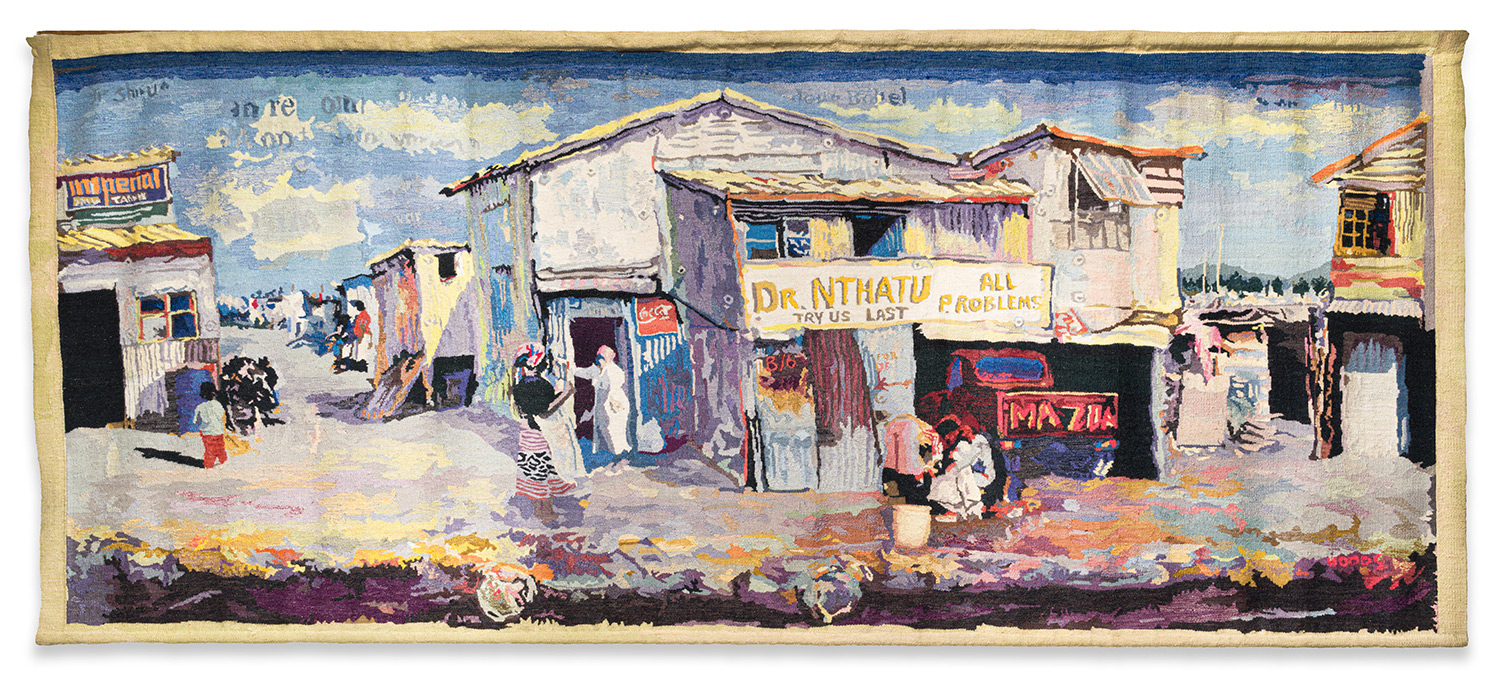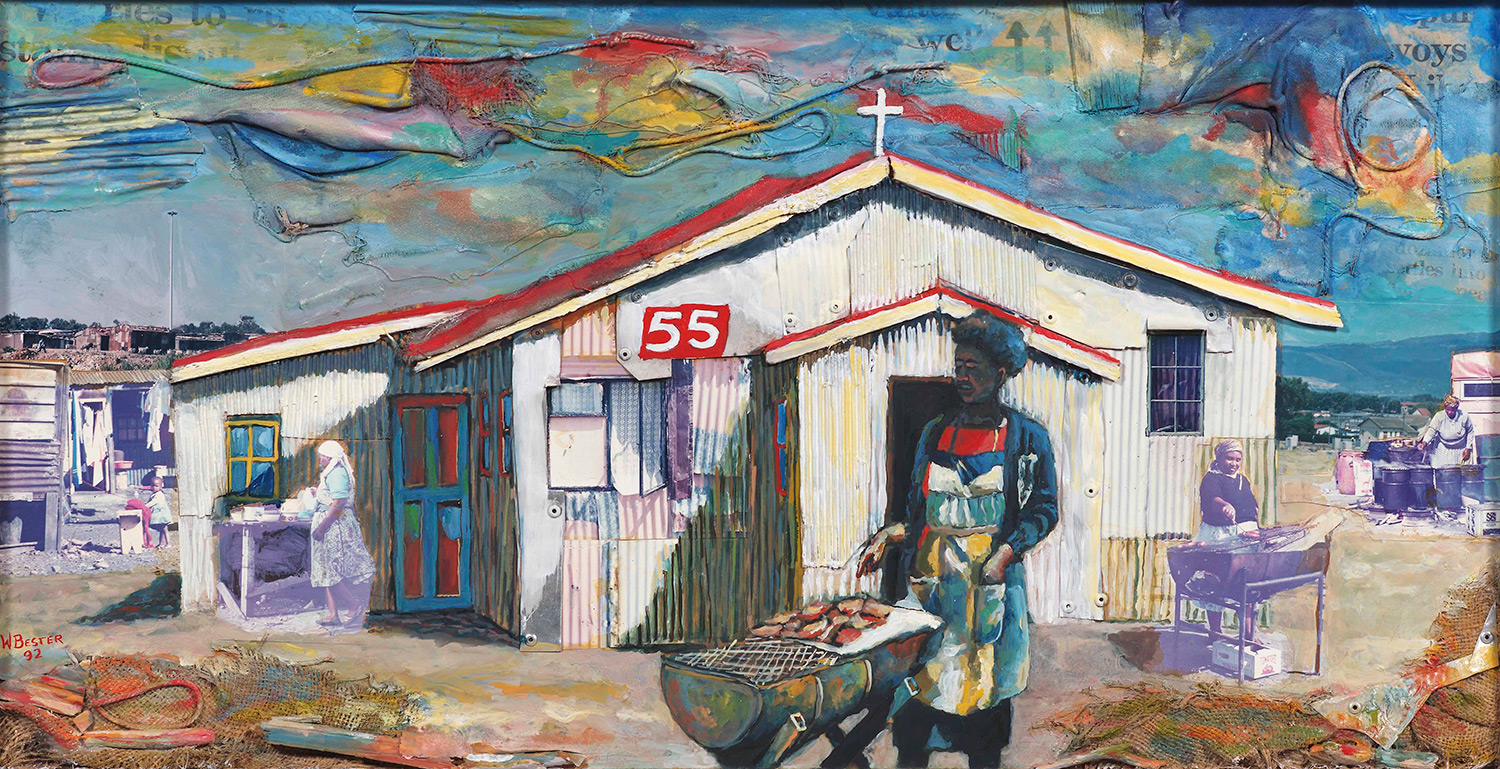Willie BESTER (b. 1956)
BIOGRAPHY
Born in the town of Montagu in the Western Cape, Willie Bester grew up making art from the materials he found in his environment.
‘Drafted’ into the Eersterivier Cadet Rehabilitation Centre for a year, like many other unemployed township and rural youths during the apartheid era, he was compelled to do army-type training in a racially prejudiced environment. Around this time, he was given some art supplies, which re-introduced him to his childhood love of painting.
At the age of 26, after working as a dental technician’s assistant for many years, Bester re-immersed himself in his art, producing mainly street scenes and landscapes, and exhibited solo for the first time in 1982.
Bester creates paintings, metal sculptures and assemblages using found objects, such as old, discarded car parts and tools. His use of anachronistic technology in the form of discarded metal waste is testament to his resourceful nature and has established his signature style. He tackles the social issues he experiences in his direct environment through the creation of work made from objects found in that environment. His artworks range from larger-than-life steel sculptures that weigh several tons to realistic oil and acrylic paintings framed in hand-beaten and painted iron.
One of South Africa’s most recognisable and versatile resistance artists for more than three decades, his choice of subject matter has been inspired by the injustices of apartheid and the disappointment and dismay he feels in response to corruption and social failures of the ‘post’-apartheid era. His work exposes the link between the harsh circumstances under which the majority of South Africans still live and the historical conditions that sowed the seeds for economic segregation and inequality during the apartheid era.
The environment is of paramount importance to Bester. Keenly aware of the threats posed by global warming and climate change, he points to the 2017 drought and the narrowly averted ‘Day Zero’ water crisis in the Western Cape as evidence of the effects of these forces on the lives of ordinary people. As an environmental artist, he feels a particular duty to respect the environment. ‘Basically, I try to respect the environment, because it’s given me the space to tell my story,’ he says.
Bester has participated in many solo and group exhibitions both locally and internationally.
He has won numerous awards including the Order of the Disa from the South African Government and was awarded with an honorary doctorate from the University of KwaZulu-Natal (UKZN) in 2019. His work is studied as part of the South African school curriculum.
Bester’s artworks grace numerous important private, corporate and public collections including the Iziko South African National Gallery, Johannesburg Art Gallery, Pretoria Art Museum, University of Cape Town, University of the Witwatersrand, UNISA, Department of National Education, the Smithsonian Institute, the Jean Pigozzi – Contemporary African Art Collection and the David Bowie Collection, as well as the SABC Art Collection.



